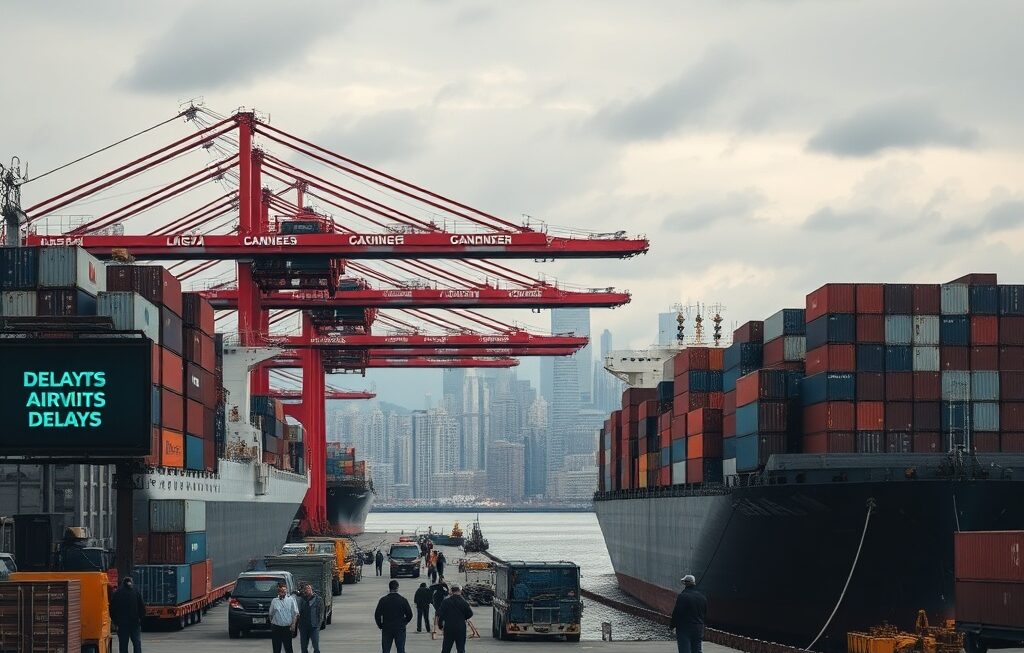Key Trends and Challenges Shaping the Future of the World Economy
Why the Global Economic Outlook 2025 Matters More Than Ever
The global economic outlook 2025 is at the center of discussions among policymakers, investors, and business leaders. After years of turbulence marked by pandemic recovery, inflationary pressures, and geopolitical conflicts, the global economy is entering a new phase—one defined by transformation, innovation, and cautious optimism.
Understanding the global economic outlook 2025 is essential for anyone seeking to anticipate changes in trade dynamics, investment flows, and corporate strategies. This article offers an in-depth, analytical perspective on what to expect in 2025, emphasizing the opportunities and risks that lie ahead for both developed and emerging economies.
Global Growth Forecast — A Period of Moderate Expansion
According to the International Monetary Fund (IMF), global growth is expected to stabilize at around 3% in 2025. Although this figure signals modest progress compared to pre-pandemic levels, it represents a period of gradual recovery and economic rebalancing.
Advanced Economies Adjust to Slower Growth
The United States and European Union continue to face the effects of high interest rates, demographic shifts, and fiscal adjustments. Nevertheless, strong labor markets and resilient consumer demand remain positive drivers. Moreover, central banks are expected to adopt more balanced monetary policies, aiming to control inflation while sustaining growth.
Emerging Markets Drive Global Expansion
Emerging economies—particularly in Asia, Africa, and Latin America—are anticipated to be the primary contributors to global growth. With improving infrastructure, digital transformation, and growing middle-class populations, these regions will continue to attract investment and diversify the global economic landscape.
Inflation Trends and Monetary Policy Outlook
Inflation remains one of the most influential factors shaping the global economic outlook 2025. Although pressures have eased compared to previous years, price stability is far from guaranteed.
Transition from Tight to Balanced Monetary Policy
Throughout 2024, central banks worldwide maintained a strict monetary stance to curb inflation. However, by 2025, many are expected to pivot toward more neutral policies. Consequently, interest rates are projected to decline gradually, improving borrowing conditions and stimulating investment.
Furthermore, the Federal Reserve, European Central Bank, and Bank of England are signaling greater flexibility in response to shifting economic data—demonstrating a commitment to supporting sustainable growth.
Persistent Regional Differences in Inflation
While advanced economies are likely to experience moderate inflation, some developing nations may continue to face elevated price levels due to energy volatility and supply chain constraints. Therefore, policy coordination and regional cooperation will be essential to ensure balanced global recovery.
The Role of Technology and Innovation in Economic Growth
In 2025, technological advancement will remain one of the most powerful catalysts for global growth. From artificial intelligence to renewable energy, innovation continues to reshape industries and create new opportunities for economic expansion.
Artificial Intelligence and Productivity Gains
AI adoption is expected to boost global GDP by 7% within the decade. Businesses leveraging AI-powered solutions can optimize operations, improve efficiency, and enhance decision-making processes. As a result, countries investing in digital infrastructure will likely experience faster productivity growth.
The Acceleration of Green Technologies
Simultaneously, the global transition toward sustainable energy sources is accelerating. According to the International Energy Agency (IEA), renewable investments are projected to exceed $2 trillion in 2025. This shift not only mitigates environmental risks but also stimulates job creation and innovation in the energy sector.
Trade, Globalization, and Geopolitical Dynamics
The structure of global trade continues to evolve as nations adapt to shifting political and economic realities.
Reshaping Supply Chains for Resilience
One of the most notable transformations involves the reconfiguration of global supply chains. Following disruptions caused by the pandemic and geopolitical tensions, companies are increasingly prioritizing regionalization and diversification.
As a result, trade partnerships are becoming more balanced. For example, Southeast Asia is emerging as a strategic hub for manufacturing, while Latin America is strengthening its ties with North America and Europe.
Geopolitical Tensions and Economic Fragmentation
However, ongoing geopolitical conflicts and protectionist policies could limit global cooperation. Trade restrictions, tariffs, and sanctions continue to influence commodity prices and investment patterns. Consequently, governments are being urged to pursue diplomacy and collaboration to sustain global stability.
Labor Markets and Employment Outlook
The global workforce is undergoing a profound transformation driven by automation, demographic shifts, and changing employee expectations.
Skills Gap and Workforce Adaptation
To remain competitive, both developed and developing economies must invest heavily in education and skill development. The World Bank highlights that by 2025, nearly 40% of workers will require reskilling to keep pace with technological advancements.
Hybrid Work and Global Talent Mobility
Remote and hybrid work models are becoming standard across many industries. Consequently, businesses are accessing talent from around the globe, promoting inclusion and flexibility. This trend enhances productivity but also requires updated labor regulations to ensure fair and equitable practices.
Regional Economic Outlooks for 2025
Each region will play a unique role in shaping the global economic outlook 2025.
North America — Balancing Growth and Innovation
The U.S. economy is expected to expand by 2.2%, driven by technological innovation, consumer spending, and strong labor participation. Canada, meanwhile, benefits from energy exports and housing sector stability.
Europe — Transition Toward Green and Digital Economies
European economies are focusing on green transformation and digital infrastructure investment. The EU’s Green Deal and ongoing support for renewable energy are helping create a sustainable foundation for long-term growth.
Asia-Pacific — The Engine of Global Growth
Asia remains the fastest-growing region. China’s industrial modernization, India’s digital revolution, and Southeast Asia’s expanding e-commerce markets collectively position the region as a leading driver of global economic progress.
Africa and Latin America — Emerging Opportunities
Both regions show great potential thanks to demographic growth, expanding middle classes, and rising foreign investments. However, challenges such as infrastructure gaps and political instability must still be addressed to sustain growth momentum.
Key Risks Influencing the 2025 Economic Outlook
Despite encouraging projections, several risks could derail global recovery.
Climate Change and Environmental Disruptions
Extreme weather events continue to impact agriculture, energy, and trade logistics. Therefore, integrating climate resilience into economic planning remains a top priority for governments and businesses alike.
Financial Market Volatility
Fluctuations in stock markets and currency exchange rates could undermine investor confidence. To mitigate this, stronger financial governance and transparent regulations will be essential.
Technological Inequality and Cyber Risks
While innovation fuels growth, unequal access to technology may deepen economic disparities. Moreover, increasing cyber threats highlight the need for robust digital security frameworks worldwide.
Investment Opportunities in 2025
Even amid uncertainty, investors can identify promising sectors aligned with global trends.
Renewable Energy and Green Infrastructure
Clean energy, electric vehicles, and smart grids are expected to attract substantial investment. Sustainable finance instruments such as green bonds are becoming central to portfolio diversification.
Digital Transformation and FinTech Expansion
Technology-driven sectors—including FinTech, e-commerce, and cloud services—will continue to thrive. Consequently, investors are increasingly favoring businesses that demonstrate adaptability and digital maturity.

In summary: Navigating the Global Economy with Insight and Resilience
In summary, the global economic outlook 2025 reveals a world in transition—one balancing between opportunity and uncertainty. While growth remains moderate, innovation, sustainability, and collaboration will shape the path ahead.
Businesses that embrace agility, invest in people and technology, and align with sustainable principles will be best positioned to succeed. As global dynamics continue to evolve, staying informed and adaptable will be the key to thriving in the new economic era.




